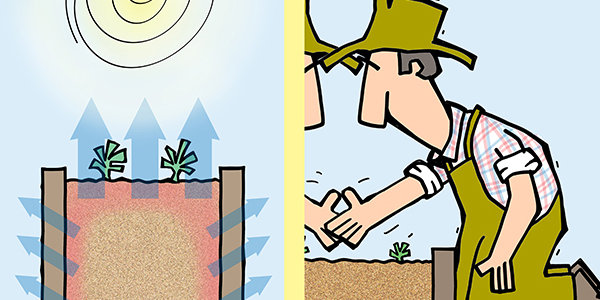Eggplant (sometimes known as Aubergine) is a tasty and versatile vegetable that is both worthwhile growing and saving seeds from. However, it takes a little more effort to extract the seeds from eggplant fruit than say from tomato or capsicum fruit. Here is how to save your own eggplant seeds.
Eggplants will both self and cross pollinate, which means that an eggplant is more likely to fertilise its seeds with pollen from its own flowers, but it can cross pollinate with other varieties of eggplants. To improve the likelihood that the eggplant seeds you collect are true to type it is best to only grow one variety of eggplant and to grow them bunched together, that way when cross pollination does occur it is most likely to be with one of the nearby eggplants of the same variety.
The eggplant that you eat are in fact only half mature. This is because the more mature an eggplant is the bitterer the taste. A fully matured eggplant is too bitter to eat. Eggplant seeds need to be saved from fully mature eggplants.
You can tell whether an eggplant is fully mature by the colour of its skin. Mature eggplants have a dull grey to light yellowish hue to them, depending on the variety of eggplant this yellowish colouration is more pronounced in variegated varieties of eggplant than black varieties. In order to get a good genetic spread choose fruit from at least two or three different eggplants, but only from healthy disease free plants as some diseases can be transferred from the mother plant to its seeds.

TOP: Immature Eggplant suitable for eating. BOTTOM: Mature eggplant that would be too bitter to eat but ideal to save seeds from. The variety of eggplant is Tsakoniki.
Slice the eggplant in half lengthwise. With a teaspoon scrape out the pulp containing the seeds and place in a bowl. The seeds will be concentrated at the larger end of the eggplant so take most of the pulp from there.

Scraping the pulp containing the seed with a teaspoon.
Transfer pulp to a fine mesh sieve. Gently massage the lumps of pulp with your thumb and forefinger while spraying with a low-pressure jet of water. This will push most of the seeds from the pulp. Pick out the larger pieces of pulp, which should leave you with a mixture of seeds and a soft pulp slurry.

Separating the larger pieces of pulp from the seeds with the use of low-pressure water whilst gently massaging the pulp to help separate the seeds..
Spray the seeds with a high-pressure hose until all the remaining soft pulp has been pushed through the sieve and you are left with just the seeds.

Removing the remaining pulp with a high-pressure hose.
Tap the sieve’s bottom on several sheets of newspaper so that the newspaper absorbs most of the excess water, then tip the seeds onto some more dry newspaper. Place the newspaper containing the seeds in a dry place away from direct sunlight.

Tapping the base of the sieve onto newspaper to absorb excess water.
Leave the seeds on the newspaper to dry for a couple of days. They can be left in any spot where it is warm and dry with good ventilation, but do not place the seeds in direct sunlight as too much heat may kill the seeds.
Once the seeds are completely dry place them in a dry container and label it with the variety of eggplant saved and the year it was saved. If eggplant seeds are kept dry and not exposed to extreme heat they should be viable for four years. A variety of containers can be used to store the seeds, including old envelopes, plastic coin bags, small tins and jars.
Continue to collect new seeds every two or three years. If you find that the eggplants grown using your stored seeds are not growing true to type then discard the seeds and buy some replacement seed stock.

Clean and dry eggplant seeds ready to be stored.




